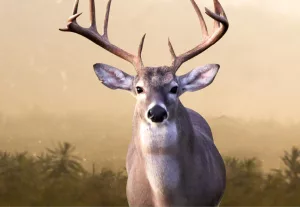What is Chronic Wasting Disease?
Chronic Wasting Disease (CWD) threatens wild and captive deer. This fatal disease is in a family of neurological diseases known as transmissible spongiform encephalopathies (TSE). In Texas, CWD impacts our native white-tailed and mule deer as well as elk and several exotic deer species including red deer, and sika deer. If not managed, CWD can have devastating, long-term impacts on Texas´ beloved white-tailed and mule deer. Visible symptoms often don’t appear until just before death. Learn about your important role in protecting the state’s most popular game animals.
First Case in Colorado
Chronic Wasting Disease was first found in 1967 in captive mule deer in Colorado. As of May 30, 2023, CWD has been documented in captive and free-ranging deer in 30 states and in Canada.
Discovery in Texas
The first case of CWD was discovered in 2012 in a free-ranging mule deer in West Texas and in a captive white-tailed deer in 2015. Hundreds of cases have been confirmed in captive and free-ranging deer since the initial discovery in 2012.
Economic Impact
If CWD is not contained and controlled, the implications of the disease for Texas and its multi-billion-dollar ranching, hunting, wildlife management, and real estate economies could be significant.
What Do I Need to Do?
The Texas Parks and Wildlife Department (TPWD) asks that all Texans be aware of CWD and help curb the spread. Hunters, deer breeders and landowners are the most important participants.
Landowner Responsibilities & Information
Testing all hunter-harvested deer from your ranch helps to establish confidence to you and your hunters that CWD is not present in the deer population on your property.
What is Texas Parks and Wildlife Doing?
Management Plan
TPWD and the Texas Animal Health Commission (oversees exotic deer) have a plan to protect Texas deer. Learn more about CWD’s history and science here, too.








